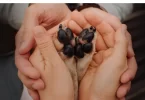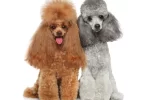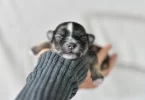Dogs have a unique way of forming bonds with the people in their lives. They can show loyalty, affection, and attachment, but sometimes, their favorite person might change. Have you ever noticed your dog gravitating more toward another family member when they used to be attached to you? There are several reasons why this can happen. Let’s explore some common causes behind this shift and how you can continue to strengthen your relationship with your furry friend.
1. Daily Interaction and Routine Changes: Time Equals Trust

Dogs naturally form attachments to the people who spend the most time with them. If your routine changes and someone else in the house starts feeding, walking, or playing with the dog more often, the dog’s favorite person might shift. Quality time spent together is one of the primary building blocks of a dog’s bond with their human. So, if someone in the family is suddenly around more—due to a change in their schedule, such as working from home or having more free time—it’s likely your dog will grow closer to them. Remember, dogs thrive on consistent interaction, and the more time they spend with someone, the stronger their bond becomes.
2. Personality Compatibility: Energy Matters

Just as humans tend to connect better with people who share similar interests and personalities, dogs are no different. A high-energy dog may prefer someone in the house who enjoys long walks, runs, or games of fetch, while a more relaxed dog might gravitate toward a person who provides calm, quiet companionship. Dogs are incredibly sensitive to the energy levels of the people around them. As the energy dynamics in a household shift—whether it’s due to changes in someone’s lifestyle, routine, or mood—so can a dog’s preference. Over time, your dog may naturally align more with the person whose energy and activity levels best match their own.
3. Health and Well-Being: Caregivers Matter

As dogs age or develop health conditions, their needs change. During these times, they may bond more closely with the person who provides the most care. This can include administering medication, offering extra comfort, or attending vet appointments. If someone in the family takes on the role of primary caregiver, the dog may naturally shift their attachment to that person. Dogs seek comfort and stability during times of illness or vulnerability, and the person who provides this care will often become their favorite. Being the caregiver in these situations builds trust and deepens the bond between dog and human. Over time, the dog may come to rely on this person for their sense of safety and well-being.
4. Training and Leadership: Dogs Follow the Leader

Dogs are pack animals by nature, and they often look to the person who takes on the leadership role within the household. If one family member has been more involved in training, setting rules, or establishing routines, the dog will likely see them as the leader. This isn’t about dominance but rather trust and guidance. Dogs thrive on structure, and they often favor the person who provides consistent, calm, and confident direction. If someone in the house becomes more involved in the dog’s training, they may start to prefer that person, especially if the training includes positive reinforcement and reward-based methods.
5. Emotional Connection: Dogs Sense Feelings

Dogs are incredibly intuitive and can pick up on human emotions. They often form strong attachments to the person who provides the most emotional support, whether through calm energy, attention, or affection. If someone in the household is going through an emotional period—such as stress, anxiety, or sadness—the dog may feel drawn to comfort them. This is one reason why dogs often shift their favorite person in response to changes in a family’s emotional dynamic. On the other hand, if a particular family member exudes calmness and peace, the dog may be more inclined to gravitate toward them for emotional stability.
Conclusion
A dog’s favorite person can change over time for a variety of reasons, including shifts in daily routines, personality compatibility, caregiving responsibilities, leadership in training, and emotional connections. Understanding these factors can help you strengthen your bond with your dog and ensure that, no matter who their current favorite may be, they always feel loved and secure.





